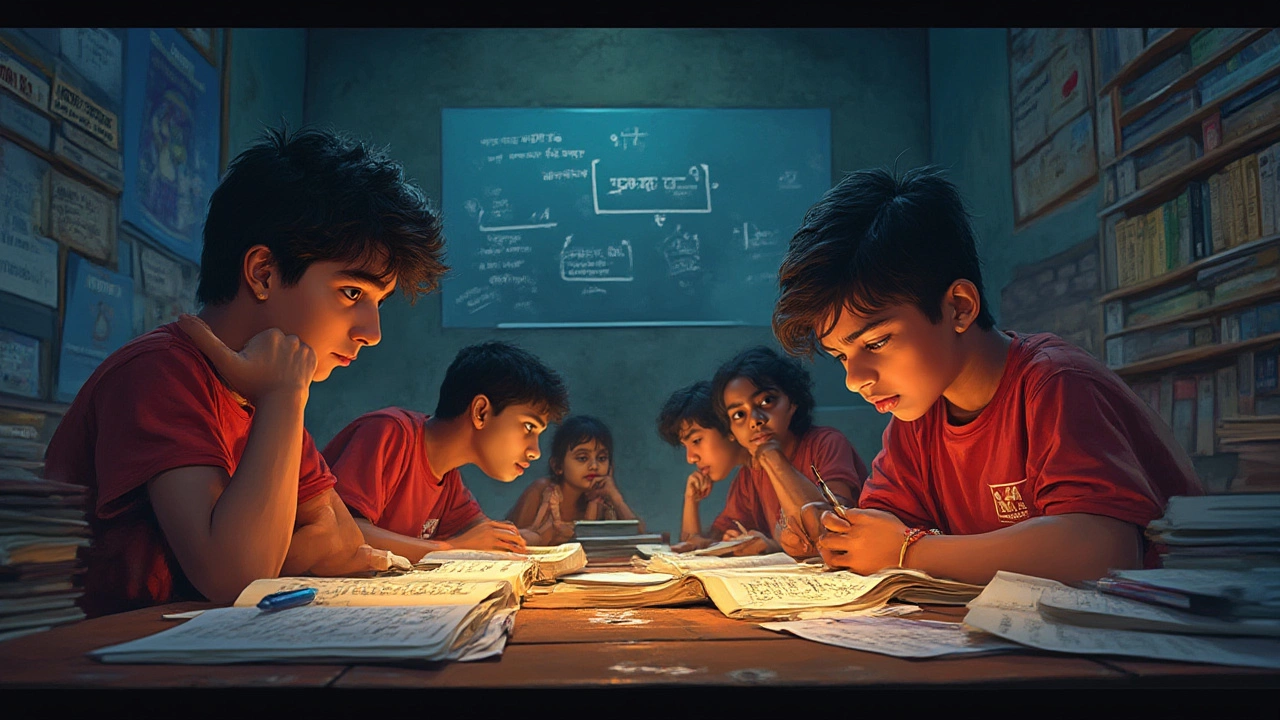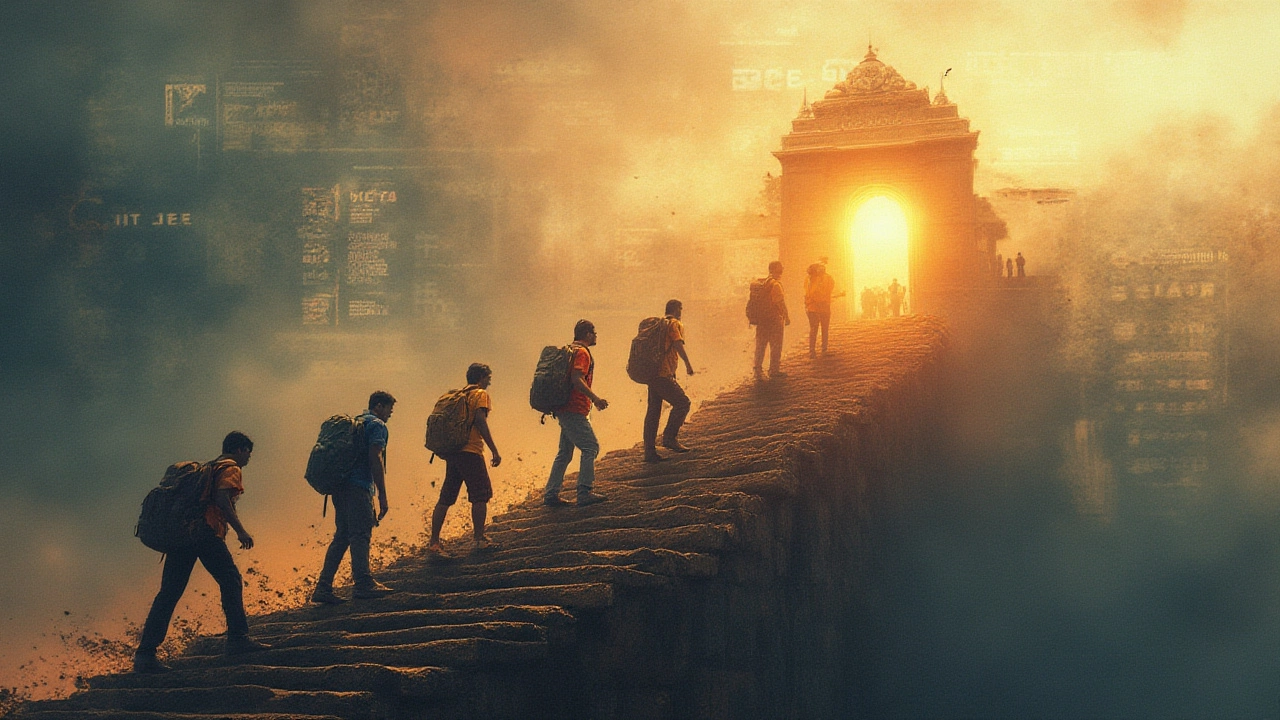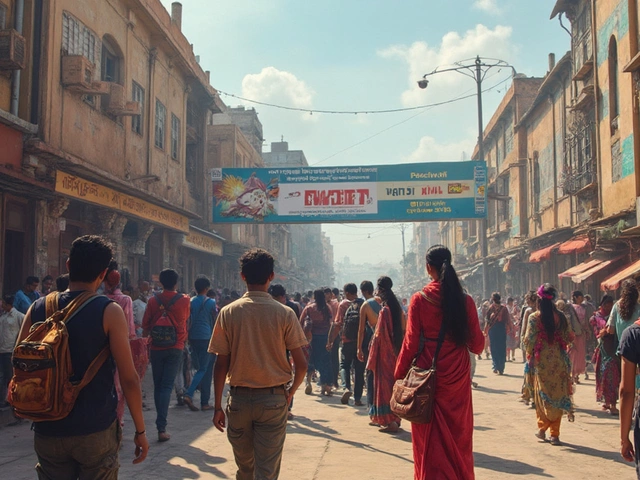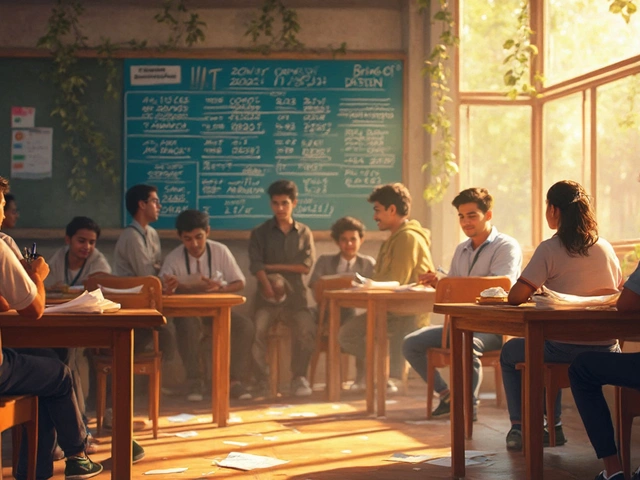
The numbers will make you sweat. Every year, nearly 1.5 million students show up, pencils sharpened, eyes wide with hope, just for a shot at the Indian Institutes of Technology. Roughly 2%—sometimes less—manage to clear all the rounds. Now that’s not just competition; it’s a battleground. But is the IIT Joint Entrance Examination, or JEE, really the cruelest beast among all Indian exams? Or have we put it on a pedestal because of the hype, sleepless nights, and family WhatsApp groups? The debate is fierce, with parents, teachers, and students all having a stake. So, what’s the truth behind the legend? Let’s pick apart the facts, the myths, and the real meaning of ‘tough’ in the land of endless competitive exams.
The Anatomy of the IIT JEE
IIT JEE isn’t just one exam. It’s a two-tier system: JEE Main and JEE Advanced. First up, students face JEE Main—an obstacle course in Physics, Chemistry, and Mathematics. Finish in the top 2 to 2.5 lakh (roughly the top 10–15%), and you earn the right to attempt JEE Advanced. This is where the real culling begins. Here’s the kicker: only about 16,000 to 17,000 seats are available in all the IITs combined every year. So even at the Advanced level, you’re fighting against almost 200,000 warriors for a place at the table.
Mental and physical stamina matter. Two highly challenging papers—each three hours long, tricky even for the brightest—packed into a single day. Expect questions that are more like puzzles than direct recall. You’ll juggle topics, combine concepts, and try to outwit the paper-setters, who seem to enjoy testing limits not just of knowledge, but also grit and self-control. The pattern changes nearly every year, so there’s no paint-by-numbers strategy.
Here’s a look at the kind of odds you’re up against:
| Year | JEE Main Registrations | Advanced Qualifiers | Final IIT Admissions |
|---|---|---|---|
| 2022 | 1,200,000 | 160,000 | 16,500 |
| 2023 | 1,400,000 | 180,000 | 17,500 |
| 2024 | 1,550,000 | 200,000 | 17,800 |
It’s not just brains—it’s also a marathon of patience. The JEE story is legendary for students putting in three, sometimes even four, years of non-stop groundwork. And there’s the psychological pressure: Indian families often pin dreams and reputations on this one exam. Ask anyone who’s spent a summer in Kota (the coaching capital of India), and they’ll tell you about 14-hour study days, mountain-high piles of mock tests, and the hum of stress in the air.
But what really sets the JEE apart from other exams is how it rewards problem-solving over mere memory. It measures whether you can apply basic concepts under pressure, find links between seemingly separate topics, and still keep your head clear. “IIT JEE isn’t just a test of intelligence—it’s a test of perseverance and psychological strength,” says Dr. Anil Kumar, an IIT alumnus and popular coach, and this sentiment rings true for most who’ve stepped into the JEE arena.
Comparing IIT JEE to Other Indian Exams
Let’s play devil’s advocate: Is IIT JEE really the toughest, or does it just feel that way because of all the noise around it?
Take NEET, the medical entrance exam, which actually pulls in even more candidates—close to 2 million each year. The acceptance rate is agonizingly low, often under 3%. The big difference? NEET is heavily based on rote memorization and syllabus completion, while the JEE presses for creative thinking and integration. So while both are fiercely competitive and draining, JEE throws more curveballs at students who prefer black-and-white answers.
Then there’s the UPSC Civil Services Exam, with its own brutal filtering. Lakhs of aspirants—commonly 1 million plus—get funneled down with each stage: Prelims, Mains, then Interview. Success rates here are even more dismal, sometimes below 0.3%. What’s different? UPSC is a test of general knowledge, writing skill, and current affairs, not just technical prowess.
There’s also CA (Chartered Accountancy), which sees painful drop-outs at every stage—CPT, IPCC, and the infamous Final. Here, the grueling part is the sheer duration. I know folks who’ve spent up to seven years getting through the stages. But unlike JEE, which mostly tests once-in-a-lifetime at a young age, CA is a marathon that can stretch well into your twenties.
And don’t forget Indian Army or Defence exams, Bank PO selection, or even GATE for postgraduate engineering. Each has its own model of misery and glory.
So, what makes JEE special? It’s the mixture of absurdly tough questions, overwhelming societal pressure, the demand for deep problem-solving, and the incredibly narrow funnel of selection. The unique blend makes “toughness” not just about difficulty, but about the relentless expectation and the single-minded grind. Ask a NEET aspirant about their ordeal, and they’ll argue it’s even rougher—especially with the reservation system, medical internships, and other hurdles. Same goes for those slogging for UPSC, who have aging as one hard deadline. But for sheer conceptual depth combined with cold math and physics, I’d say JEE holds its crown.
One thing’s for sure—the idea of “tough” depends as much on your style of learning as the exam itself. If you thrive on logic, riddles, and pressure, JEE might suit you better than, say, memory-intensive NEET or opinion-driven UPSC. The stats, though, show that no matter which big Indian exam you pick, the chances of glory are slim—and the journey’s never cozy.

Stories, Experiences, and the Culture of Coaching
No exam in India is wrapped up in as much myth, money, and emotion as the JEE. The town of Kota attracts 150,000+ students each year, all paying sky-high fees, living in cramped hostels, and chasing the same dream. The coaching industry is a behemoth here: estimated at over $4 billion by 2025. I’ve seen high-flying friends trade school cricket matches, family weddings, and even sleep, just to keep up pace in these coaching centers. If you think peer pressure is bad, try having it on a city-wide scale, where everyone is preparing for the same exam.
No parent, spouse, or neighbor stays silent: everyone has a strategy or a cautionary tale. Gemma laughs at my obsession with old JEE question papers, but honestly, it’s a cultural phenomenon. Half the legends you hear—like the NRI who topped JEE with one month of prep—are probably exaggerations. But there’s also the flip side: horror stories of burn-out, anxiety, and even worse outcomes. No one likes to talk about those, but they’re real.
Success stories often oversimplify things—no one makes it by “just loving Physics.” The students who crack JEE are survivors: years of routine, parents who double as project managers, teachers whose entire career revolves around the next set of toppers. People build their lives around these coaching calendars. What’s often ignored is the crazy diversity in the backgrounds of the kids who make it—kids from big metros and rural corners, CBSE and state boards, English and Hindi mediums. They all come together here, making it not just a test of knowledge, but of adaptability. If you want to see a real melting pot of Indian ambition, just step into a Kota reading room at 9 p.m.
The mental side is what often gets swept under the carpet. Some handle failure just fine, while others crash hard. The pressure around JEE—in the race to avoid “wasting a year”—can warp your whole outlook on life. Talk to anyone who’s been through JEE prep, and they’ll say the toughest part was, more often than not, fighting the voice in your own head.
"Cracking JEE taught me to learn, unlearn, and relearn quickly. It wasn’t just about science; it was about facing life’s curveballs with confidence." — Raj Shekhar, IIT Delhi (2022)
Culturally, clearing JEE still brings hero status in many households. It’s the stuff of decades-old family photos and glowing newspaper clippings. But the personal cost? Not always visible on the result sheets.
Tips, Takeaways, and Changing Mindsets
If you’re standing at the starting line—wondering if you’ve got what it takes—it helps to know some hard-earned lessons. First, recognize that the IIT JEE is not a sprint, it’s a two-to-four-year relay race against your own limitations. The study techniques are less about memorizing formulas and more about repeated, spaced practice with “why” and “how” questions. Unseen variables can crush even the best—illness, stress, and sometimes even the question paper being not what you expected. What helps? Consistency—one mock test at a time, and lots of sleep. There’s no shortage of resources, but it’s easy to drown in them. Just picking one standard set (say, HC Verma for Physics, OP Tandon for Chemistry, and TMH for Mathematics) and going deep matters way more than scanning every book on the market.
If you’re already in prep mode, treat every mistake as a friend. Review failures, don’t just chase correct answers. Forming a small, reliable study group helps: you back each other up, spot gaps, share tricks, and keep the grind lighter. Avoid isolation, and bear in mind that setbacks are part of the deal; the average IITian failed several times—at school tests, at coaching quizzes, at mock exams—before finally nailing JEE.
Don’t ignore the mental stuff. Boundaries, sports, fun—these are not luxuries. Taking a short walk, zoning out to music, or just laughing with friends (shoutout to Gemma pestering me for chai breaks) can rescue your mental state on bad days. If things get heavy, talk to family or a counselor. There’s no glory in burning out before the finish line.
And here’s a wild thought: Your life doesn’t end—or even peak—with the IIT JEE. People who didn’t crack it have gone on to start companies, win research awards, change state policies, and whatnot. “JEE isn’t your destiny, just a milestone,” says one IIT Bombay prof, and he’s spot-on. The knowledge and emotional muscle built during JEE prep pay dividends for decades, whether or not you end up in Kharagpur or Kanpur.
So is JEE the toughest exam in India? It’s a nasty contender, for sure—the odds are terrifying, the process is harsh, and the cultural pressure is sky-high. But whether “toughness” is determined by numbers, by stress, by depth of the syllabus, or by mental stamina, might just depend on who you ask—and what kind of challenge fires you up.





